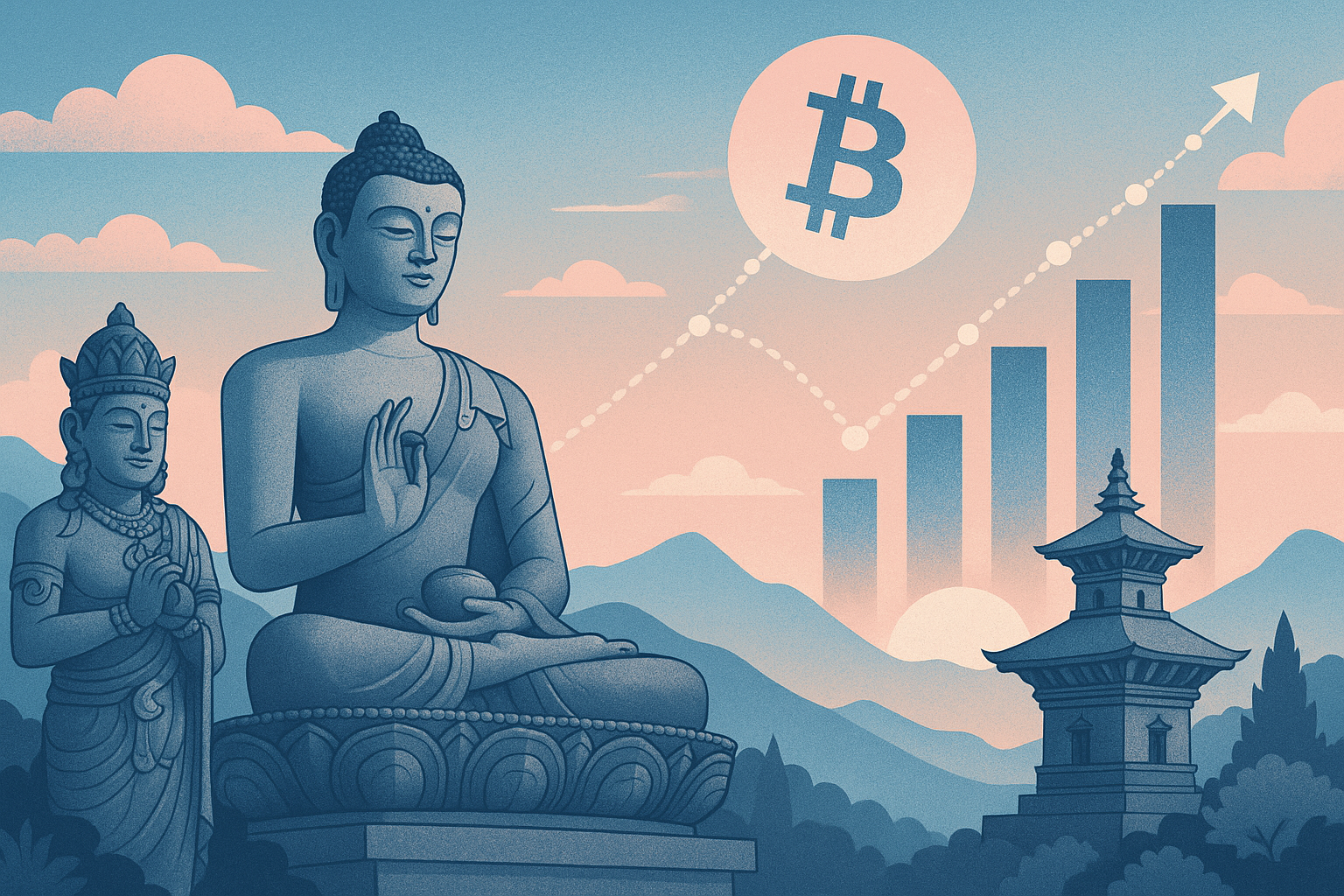Quick rewind: Bhutan and crypto, an unlikely love story
Okay, so I'll admit it—I didn’t have “tiny Himalayan kingdom doubles down on crypto” on my 2024 bingo card either. Yet here we are. Bhutan, a country better known for yaks, monasteries, and that famous Gross National Happiness index, is suddenly popping up in crypto headlines. The latest twist dropped this week at the Digital Bhutan panel (co-hosted by Binance), where officials straight-up said they want to haul crypto “out of theory and into everyday life.” Bold words for a nation of just 800,000 people, right?
For context: Bhutan’s not exactly a stranger to digital assets. Last April, Forbes leaked documents showing the state-owned Druk Holding & Investments had quietly been stacking coins on Celsius and BlockFi before those platforms imploded. Then, in May, the government teamed up with Bitcoin mining giant Bitdeer to build a 100-megawatt hydro-powered farm. So the seeds were already in the ground—this Binance Pay integration is just the latest sapling poking through Bhutan’s alpine soil.
Here’s what actually happened
During the panel, Tourism Council officials announced they’ll pilot Binance Pay across the entire visitor experience—hotel bookings, entrance fees, restaurant tabs, you name it. The idea is that tourists can fly into Paro, whip out USDT or BTC, and settle bills faster than you can say “yak butter tea.” No more fiddly currency exchanges or waiting on a credit-card slip. The rollout supposedly starts Q1 2024, right in time for the high-altitude trekking season.
One official threw out an eye-opening stat: pre-pandemic Bhutan welcomed roughly 325,000 tourists in 2019. Since the country reopened in September 2022, foot traffic has limped back to ~60% of that number, partly because of the steep $200 Sustainable Development Fee the kingdom charges per visitor, per day. If crypto can grease the wheels—even a little—those lost tourism dollars could return faster.
Why I’m side-eyeing but still intrigued
I’ll be honest—I’m not entirely sure tourists paying with Binance Pay is the silver bullet the Tourism Council hopes for. Most people flying to Bhutan are already dropping >$350 a day on guides and permits; fees on a credit card probably aren’t their biggest gripe. But the psychology of “I can spend my ETH earnings instead of hard-earned fiat” does shift the vibe. Spending crypto feels like spending house money, and that might nudge a few digital nomads off the fence.
There’s also the purely strategic angle for Binance. With regulators yanking its licenses in the EU and Australia, the exchange is leaning into markets where a phone call from Washington carries less weight. Courting Bhutan—sandwiched between India and China—hits that sweet spot. If the pilot works, expect headlines about “Binance Pay lights up Sri Lanka” or “Maldives integrates BUSD” next.
But wait, what about India’s hostile stance?
This is the tangential thought that kept nagging me: Bhutan’s southern border is basically one long ATM for Indian rupees. India has slapped stringent taxes on crypto—think 30% on gains and 1% TDS on every trade. If Indian tourists suddenly realize they can hop a one-hour Druk Air flight, swap INR for BTC, and splurge tax-free in the mountains… does New Delhi step in? No one at the panel touched that third-rail question, but it’s lurking.
A quick price check—because we’re all chart-watchers here
Right as the news hit, BNB hovered near $244, more or less flat on the week. I didn’t see the “Bhutan effect” traders joking about on Crypto-Twitter. BTC sat at $37.2k, and ETH clung to $2,020. Nothing earth-shattering, but keep an eye on BNB’s daily active addresses. If the pilot generates even 3–5k new users a month, that’s a small but real demand bump in an otherwise sideways market.
So, does this actually matter for your portfolio?
If you’re hunting for the next 100x altcoin, probably not. Bhutan isn’t turning into El Salvador v2 overnight. But it does signal a broader trend: emerging economies with abundant green energy (hydro, in this case) are warming to crypto payments and mining as a dual-revenue play. That narrative helped lift KAS and other proof-of-work green-energy tokens earlier this year, and I wouldn’t be shocked if you start seeing “Himalayan Hashrate” memes flying around.
I’m also watching stablecoin velocity. If tourists mostly spend USDT or FDUSD via Binance Pay, that’s one more data point that stablecoins—not volatile native tokens—are the on-ramp to real-world adoption. Remember, Circle’s USDC already processed $4.1 trillion in on-chain transfer volume Q3 2023. Bhutan could be yet another arrow in that quiver.
My stab-in-the-dark prediction
By the end of 2024, I’d bet at least 25% of Bhutan’s tourist receipts flow through some form of crypto payment. That could translate to roughly $50–60 million in annual on-chain volume—tiny for Binance, but gigantic for a country whose entire GDP is only $2.5 billion. If that happens, expect other niche travel destinations—think Seychelles, Fiji—to copy-paste the playbook.
Will BNB moon on the back of it? Probably not. But the bigger macro takeaway is the slow, almost boring march of crypto from trading interface to everyday utility. And honestly, boring adoption stories might be what carries us through the next cycle.
If you’re planning a trip—some practical tips
- Binance Pay supports over 70 cryptos. Double-check fees; stablecoin sends are usually cheapest.
- Bhutan’s SIM cards are spotty in the mountains—download QR codes in town before you trek.
- The Sustainable Development Fee is payable in crypto but still non-refundable. Don’t ape in.
- Always keep a small stash of Ngultrum (BTN) for rural tea stalls that haven’t gone digital yet.
Final thought—yak butter and blockchains
Look, I never expected to write a sentence that combines yaks, butter tea, and blockchains, but crypto keeps throwing curveballs. Bhutan’s move might feel like a quirky headline today, yet it scratches the bigger itch of making our digital bags spendable without first off-ramping to boring fiat. And that, my friends, is a trend worth watching—even if you’ve never heard of Paro Airport until now.



